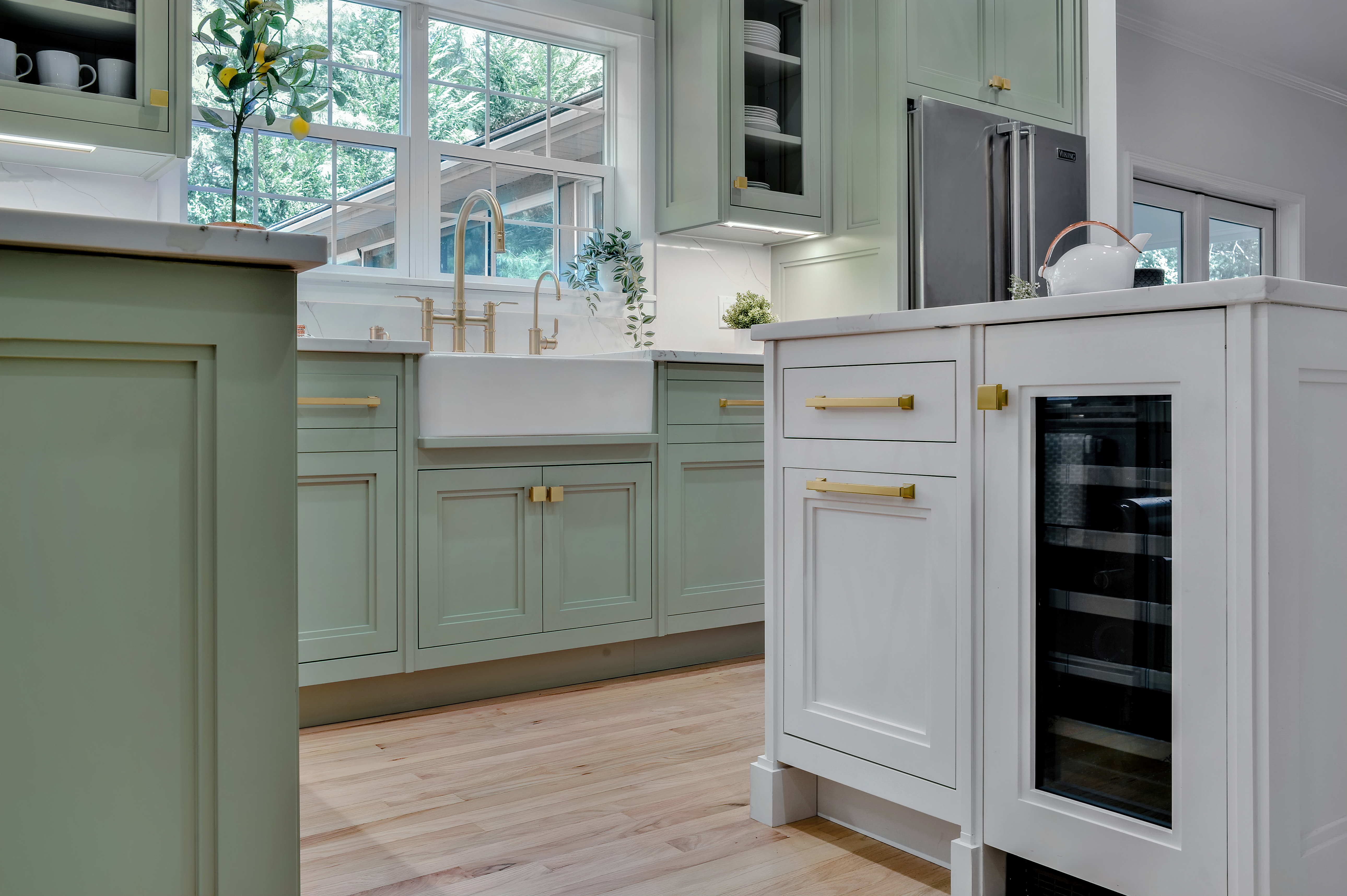
Remodeling a kitchen is a big undertaking. There are a multitude of different design choices to consider, from the type of flooring to your countertop material, but our cabinetry is - understandably - one of the most important. Before you make any commitments on what to choose, however, you'll need to make sure you're clued up on all the options out there, including the inset cabinet style.
You've heard of shaker cabinets, flat panel fronts, and beaded doors, but do you know what an inset cabinet is? Even if you've heard the name bandied about, what you might not realize is all of the cabinet styles mentioned above can also be inset, making for a more sleek, streamlined, and bespoke-looking modern kitchen.
But what's actually meant by inset cabinets, and what do they look like? To find out more about this trending cabinetry idea, we asked a kitchen designer to explain more and share his insights on the various pros and cons. Here's what you need to know.
What is an inset kitchen?
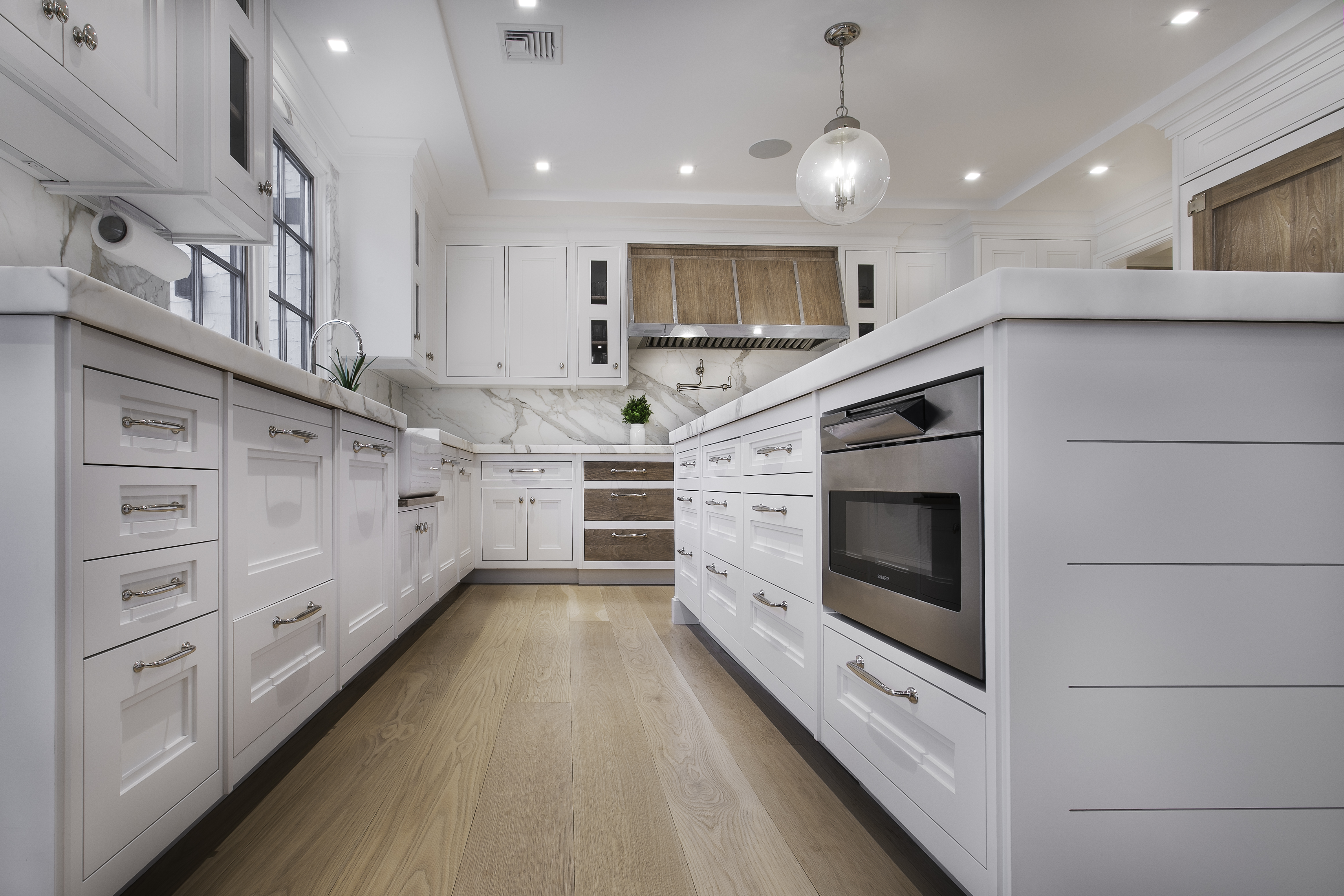
If you haven't yet inferred from the name, inset cabinets have doors and drawers that fit inside - or are 'inset' into - the entire cabinet frame so that they sit flush, rather than overlayed on top. Visually, it's a far sleeker kitchen cabinet idea, perfect if you're after a more minimalist look with clean, crisp lines.
'Inset refers to the original method of cabinetry manufacturing in which the door hangs from a fixed frame using a traditional hinge,' explains Bob Bakes, head of design at Bakes and Kropp. 'The cabinet face is surrounded by its frame on four sides, as opposed to the contemporary overlay face that sits against the frame. Overlay cabinetry was conceptualized as a cost-effective alternative to the traditional, inset method of manufacturing.'
Overall, they give a more refined, built-in, and bespoke look due to the precise fittings.
What are the benefits of an inset kitchen?
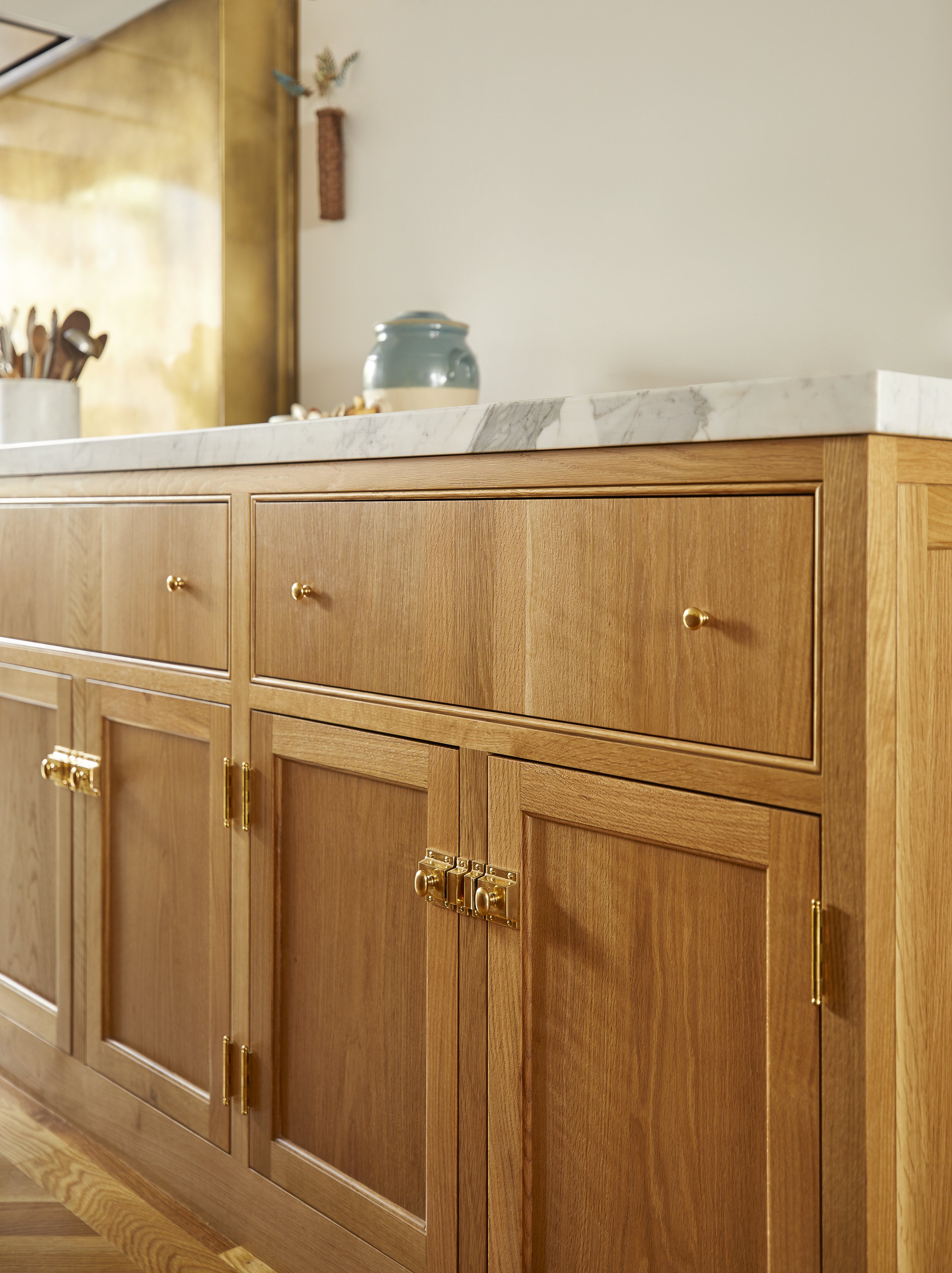
'Though there are no huge practical benefits, an inset kitchen has an aesthetically rich, luxurious look that honors the original craftsmanship of cabinetry,' explains Bob. Ultimately, this tailored, custom look that results from the detailed carpentry is one of the best ways to make your kitchen look more expensive.
While not groundbreaking, there are a few practical benefits that come with inset kitchens, too. First off, you can bid farewell to the worn, chipped corners of overlay doors and drawers. The built-in cabinet design prevents them from being accidentally nicked or damaged while you're busy rushing around the kitchen with the likes of heavy pans.
The slimmer width of the cabinets without the addition of the overlayed door or drawer will also make your kitchen feel bigger (and will technically save you a smidgen of room, which can be especially useful when it comes to upper cabinets above a countertop).
What are the disadvantages of inset cabinets?
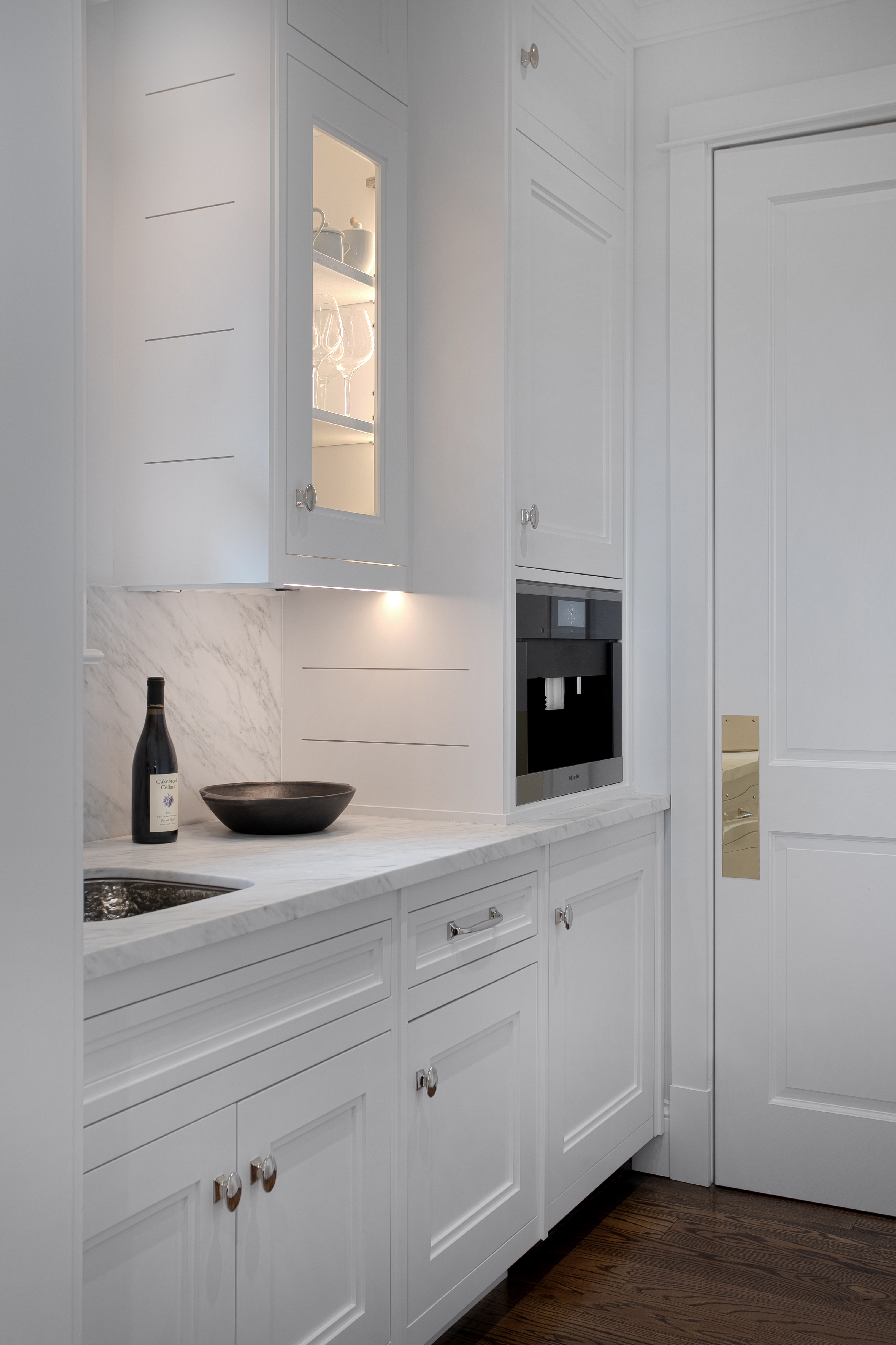
You might be sold already, but there are a few drawbacks of inset kitchens worth knowing about. While you might gain a little bit of exterior space, you will lose a bit of room on the inside of your cabinets since the door now closes inside the frame itself. Generally, this is extremely minimal, but if you do find your large plates or pans reach right to the edge of the cabinet shelf, you might find that the door no longer closes fully.
According to Bob, you may also experience some issues with wood swelling, making it difficult for the doors or drawers to open and close properly. 'While most modern manufacturers make allowances, movement can pose a temporary issue as the wood experiences its first heating and cooling cycle in the first twelve months,' he says. 'In this period, a real wood door may have minor shifts that cause movement without the fixed, binding frame.'
If you experience this problem, don't worry. Adjustments can be made after the first twelve months either by shaving down the wood or adjusting the hinges as needed.
It's also worth noting that you won't be able to get away without hardware for your doors and drawers since they'll sit flat with the rest of the frame. Traditionally, inset cabinets would use latches to operate, but pull bars or knob are a more contemporary choice. If you're aiming for a totally minimalist kitchen, consider slab door overlays instead.
Do inset kitchens cost more?
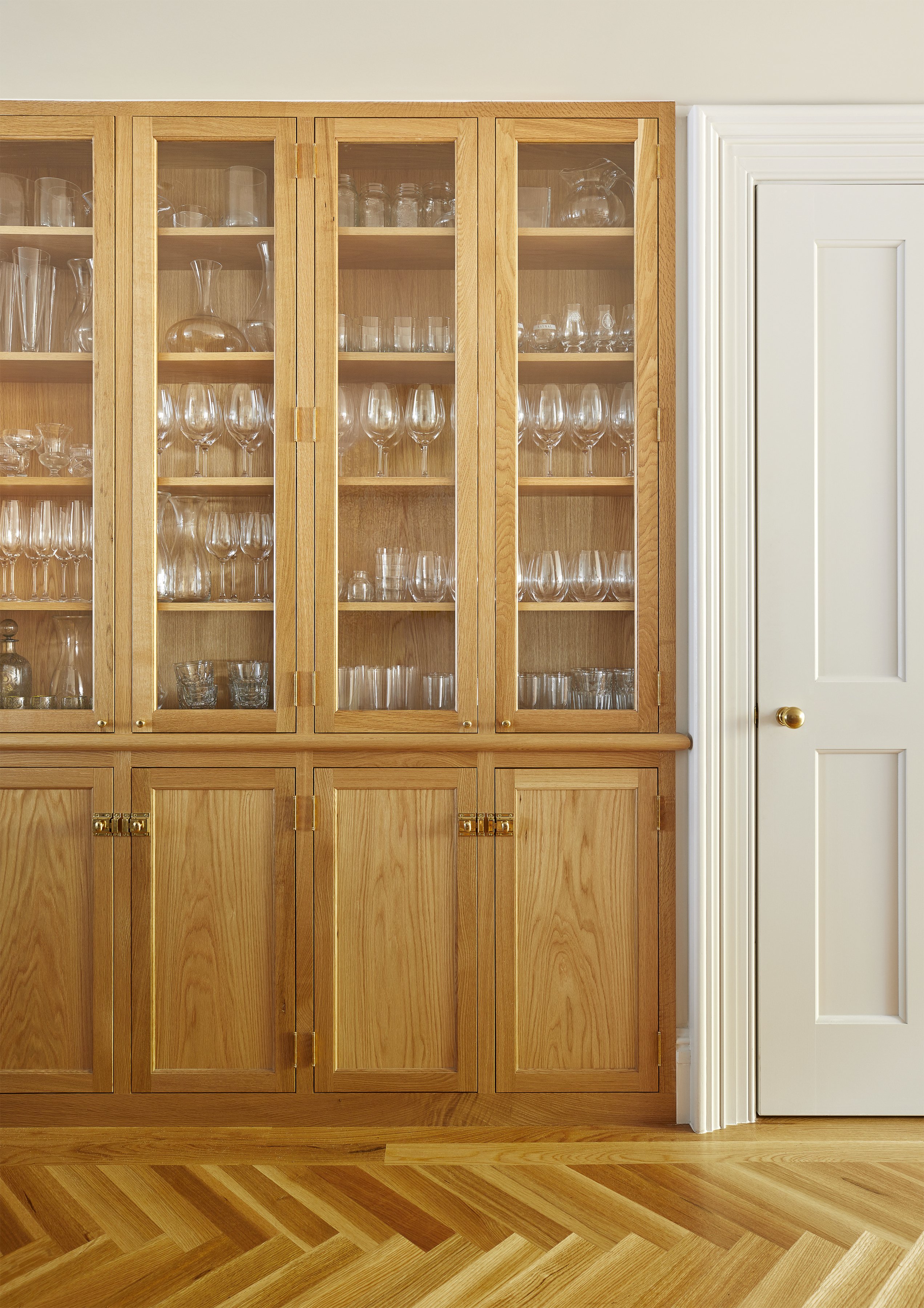
One final disadvantage you'll want to know is that inset kitchens tend to be a lot more expensive than their more common overlay counterparts (generally 15-30% more). 'They come with a higher cost due to the added time and care in the manufacturing process,' explains Bob.
However, as the saying goes, you get what you pay for. 'The cost can be justified as there's an element of luxury you get with inset cabinetry that you won’t get with an overlay,' Bob adds. If you're looking to elevate your kitchen and your budget permits them, the inset cabinet kitchen trend could be a good place to start.







